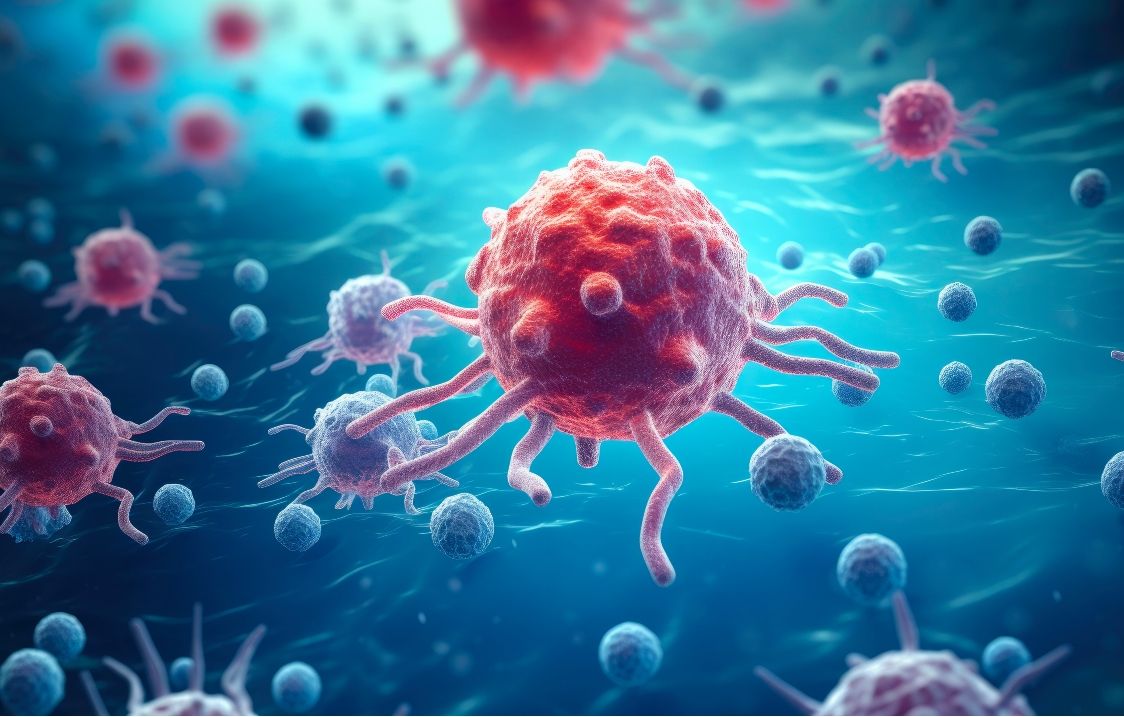- Center on Health Equity & Access
- Clinical
- Health Care Cost
- Health Care Delivery
- Insurance
- Policy
- Technology
- Value-Based Care
Review Explores Link Between Tumor Burden, CAR T-Cell Therapy Efficacy
A recent review aimed to characterize the relationship between tumor burden and clinical outcomes in patients treated with chimeric antigen receptor (CAR) T-cell therapy, highlighting the potential mechanisms of high tumor burden impacting CAR T-cell failure.
Across hematologic malignancies, chimeric antigen receptor (CAR) T-cell therapies have changed the treatment landscape and have demonstrated clinical efficacy in several settings, but many patients experience nonresponse to these treatments. A review published in JAMA Oncology aimed to characterize the relationship between tumor burden and clinical outcomes in patients treated with CAR T-cell therapy.
“A complex interplay between high tumor burden and the systemic and local tumor microenvironment on clinical outcomes of CAR T-cell therapy is emerging from preclinical and clinical data. The hallmarks of advanced cancers—namely, inflammation and immune dysregulation—sustain cancer progression,” the authors wrote. “They negatively affect the production, expansion, antitumor activity, and persistence of CAR T-cell products.”
Regarding CAR T-cell failure, the authors highlighted insufficient expansion and persistence of CAR T cells in vivo, limited tumor infiltration, CAR T exhaustion, heterogeneity or loss of target antigens, and immunosuppressive tumor microenvironments as factors known to have an impact. But baseline tumor burden has more recently been highlighted as a key obstacle to durable responses and the safety of CAR T-cell therapy, the authors explained.
First, the review discussed the ways in which tumor burden can affect CAR T-cell therapy efficacy. The presence of a large tumor and the worsening of local and systemic inflammatory and immunologic events often seen in advanced cancers pose challenges to CAR T cells. Furthermore, high baseline levels of immunosuppressive traits are associated with high tumor burden and CAR T-cell therapy failure.
Both locally and systemically, large tumors have been found more immunosuppressive than small tumors, and inflammation and immune system dysregulation can negatively impact CAR T cells from manufacturing to persistence upon reinfusion, according to the review. Chronic inflammation due to tumors can also negatively affect T-cell manufacturing and contribute to T-cell suppression. High levels of circulating suppressive monocytes and granulocytes—which are typically associated with more advanced cancer stage—are thought to impair CAR T-cell therapy efficacy, the authors noted.
“These findings shed important insight on how CAR T-cell product composition and clinical performance may be highly dependent on the pretreatment performance and immune status of the patient,” the authors wrote. “A highly tumor-burdened immune system can negatively affect the quality of CAR T-cell products and their functional activities after adoptive transfer.”
A favorable ratio of targeted CAR T cells vs tumor cells is an aspect of CAR T-cell therapy that has been found crucial to success in preclinical and clinical research, but quantifying this ratio in patients remains a challenge. The ratio of peak CAR T-cell expansion to tumor burden is a potentially prognostic surrogate, but still does not suffice as a prognostic tool for response by itself.
CAR T cell AI-generated image | Image credit: AIGen - stock.adobe.com

Tumor microenvironment factors also expose CAR T cells to barriers, including hypoxia, adenosine, acidic pH, immunosuppressive chemokines, and soluble factors. The authors noted that patients with leukemia and extramedullary and bulky disease typically have more complex and stronger inhibitory immune microenvironments compared with patients presenting with low tumor burdens. The tumor microenvironment has also been associated with CAR T-cell therapy response in diffuse large B-cell lymphoma.
Tumor burden at the time of treatment with CAR T cells has also been linked with the incidence and severity of cytokine release syndrome (CRS) and immune effector cell–associated neurotoxicity syndrome (ICANS), which are potentially life-threatening adverse events associated with CAR T-cell therapy. Severe cases of CRS or ICANS, which have distinct mechanisms, are more frequently seen in patients with high tumor burden, the authors wrote.
In solid tumors, CAR T-cell therapy has not shown the same efficacy as that seen in hematological malignancies such as leukemia and lymphoma, and the difference in outcomes among solid-tumor cancers vs hematological cancers is not well understood, the authors noted. The poor outcomes seen in solid-tumor cancers are similar to those seen in patients with hematological disease and high tumor burden.
“The role of large tumors in the immune response is a substantial barrier to CAR T-cell therapy, which may not be overcome by developments of the CAR T-cell products alone,” the authors wrote. “Combinatorial strategies, including tumor debulking with surgical resection, radiotherapy, or shifting the use of CAR T-cell therapy to target minimal residual disease, are promising areas of investigation.”
Another area of interest is CAR T cells’ potential to treat minimal residual disease after tumor resection. However, this strategy may hinge on the systemic immune landscape following resection, with favorable alterations potentially providing an opportunity for CAR T-cell therapy—although the review authors highlighted safety concerns around the exposure of potentially cured patients to the toxicities associated with CAR T-cell therapy.
Overall, future research should focus on improving CAR T-cell efficacy in cases of high tumor burden and unfavorable immune conditions. Novel strategies in CAR T-cell engineering, including incorporating gene-editing strategies, may provide opportunities to improve the performance of CAR T cells.
“High tumor burden and tumor-burdened immune system dysfunction play central roles in CAR T-cell therapy efficacy and safety with hematologic malignant tumors. Similar conditions may account for the failure of CAR T-cell therapy in solid cancers,” the authors concluded. “Altogether, the findings summarized in this review suggest that investigating the use of CAR T cells under conditions of minimal tumor burden or CAR T-cell engineering may lead to improvement in their safety and efficacy profiles against solid tumors.”
Reference
Ventin M, Cattaneo G, Maggs L, Arya S, Wang X, Ferrone CR. Implications of high tumor burden on chimeric antigen receptor T-cell immunotherapy: a review. JAMA Oncol. Published online November 9, 2023. doi:10.1001/jamaoncol.2023.4504
